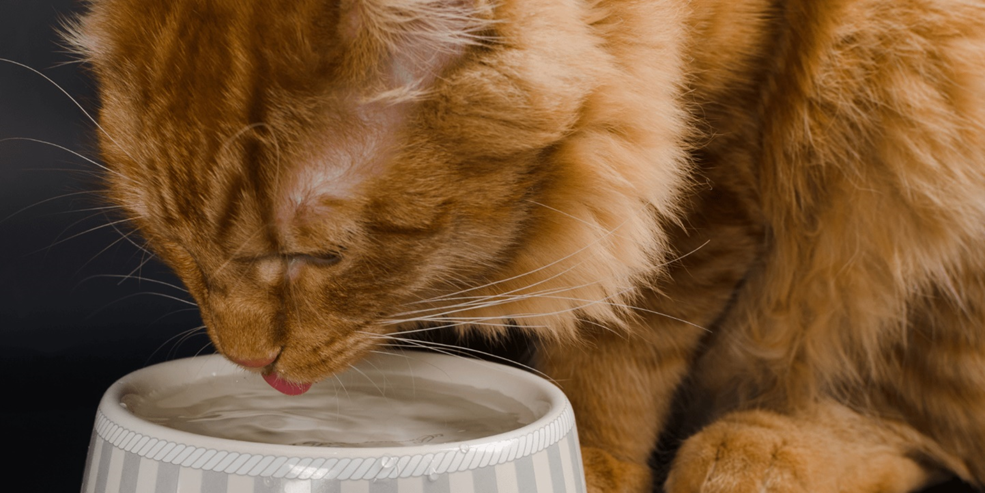Lloyd Alexandria Chavez, R.M.T
Cats possess a pair of kidneys located on either side of their abdomen, playing a crucial role in eliminating waste from their system. These organs are also key in regulating the balance of fluids, minerals, and electrolytes in the body, conserving water and protein, and supporting blood pressure and the production of red blood cells through the production of the hormone erythropoietin.
Kidney disease in cats can manifest in several forms and can stem from various causes, typically classified into either acute or chronic categories.
Acute kidney injury occurs when the kidneys are suddenly damaged, potentially impairing their function. This condition can affect both pets and humans and may result in diminished kidney performance. Fortunately, acute kidney injury can often be reversible, with approximately half of those affected—be they pets or humans—able to recover. The kidneys have a remarkable capacity for self-repair, provided the initial cause of injury is addressed and any exacerbating factors are eliminated. Recovery prospects depend on several factors, including the cause of the injury, its severity, whether other bodily systems are involved, the availability of treatments such as hemodialysis, and adherence to medical guidance.Chronic kidney disease (CKD), on the other hand, is frequently diagnosed in older cats and is characterized by a progressive decline in kidney function. Symptoms of CKD in cats include increased thirst and urination, reduced appetite, weight loss, vomiting, and a dull coat. CKD is an incurable condition that worsens over time, resulting from gradual kidney damage over months or years. Its progression and symptom onset are more gradual compared to acute kidney disease, which can emerge rapidly following significant kidney damage from causes such as infections or toxic substances like antifreeze or lilies. Cats with acute kidney disease typically exhibit severe symptoms swiftly.

SYMPTOMS
In the initial stages of chronic kidney disease (CKD), there may be no noticeable symptoms as the kidneys are still able to function adequately. However, as the disease progresses and the kidneys become increasingly impaired, symptoms will begin to manifest. These symptoms can develop gradually and may be subtle, making them difficult to detect. They include:
- Increased thirst
- Increased urination
- Decreased appetite
- Loss of weight
- Nausea and vomiting
- Reduced activity levels or lethargy
- Foul breath with a noticeable ammonia-like odor
- Development of sores in the mouth
- Neglected appearance or unkempt fur due to a decrease in grooming
- Sudden onset of blindness, which can be a result of heightened blood pressure
DIAGNOSIS
Chronic kidney disease is diagnosed through a series of blood and urine tests that measure levels of specific substances indicative of kidney function. These tests not only confirm the presence of kidney issues but also aid veterinarians in staging the disease, which helps in understanding its severity. The key laboratory tests include:
- Blood Urea Nitrogen (BUN): This measures the amount of nitrogen in the blood that comes from the waste product urea. Elevated BUN levels are often a sign of kidney dysfunction, as they suggest the kidneys are struggling to remove urea from the blood efficiently.
- Creatinine (CREA): This test assesses kidney function by measuring the concentration of creatinine in the blood. Creatinine is a waste product of muscle metabolism, and high levels can indicate poor kidney filtration.
- Phosphorus: High phosphorus levels in the blood can be a marker of kidney damage, as healthy kidneys are able to regulate the body’s phosphorus.
- Electrolytes: The balance of electrolytes, including sodium, potassium, and chloride, can be disrupted by kidney disease. This imbalance may also be influenced by secondary issues like vomiting or decreased appetite.
- Calcium: While less common, elevated calcium levels can occur in cases of kidney damage.
- Red Blood Cell Count: A decrease in red blood cells may suggest kidney failure, as healthy kidneys produce erythropoietin, a hormone that stimulates red blood cell production.
- White Blood Cell Count: An increased count could indicate an infection or inflammation, potentially complicating kidney disease.
- Symmetric Dimethylarginine (SDMA): This is a newer test that can help in the early detection of kidney disease, offering insights into kidney function.
- Urine Specific Gravity: This test measures urine concentration, with higher values indicating more concentrated urine. It reflects the kidneys’ ability to conserve water.
- Urine Sediment: Examining the sediment can reveal the presence of proteins, bacteria, white and red blood cells, kidney cells, and casts, suggesting infection or kidney damage.
Together, these tests provide a comprehensive assessment of kidney health, allowing for accurate diagnosis and staging of chronic kidney disease in cats.
TREATMENT
While it’s not possible to cure chronic kidney disease (CKD) or undo the damage that has occurred, steps can be taken to slow its progression and alleviate the symptoms. In cases where a cat is diagnosed with CKD and is showing signs of illness, the initial course of treatment may include:
- Hydration Therapy: Due to the increased urine production associated with kidney disease, cats can easily become dehydrated. Vets may administer fluids intravenously or subcutaneously to replenish the lost fluids and support kidney function.
- Nausea Control and Appetite Stimulation: The buildup of toxins in the bloodstream can cause nausea and decrease appetite in affected cats. To combat this, vets may prescribe antiemetic medications to control nausea and appetite stimulants to encourage eating.
- Blood Pressure Management: CKD can lead to elevated blood pressure, which not only exacerbates kidney damage but can also cause additional health issues, such as sudden blindness. If high blood pressure is detected, your vet may prescribe medication to help manage it.
- Antibiotics: Cats with CKD are at a higher risk of developing urinary tract infections (UTIs). If there are signs of a UTI or another infection, antibiotics may be prescribed to treat the infection.
This treatment regimen aims to manage the symptoms and complications associated with CKD, improving the quality of life for cats living with this condition.
Sources:
https://www.petmd.com/cat/conditions/urinary/kidney-disease-cats

